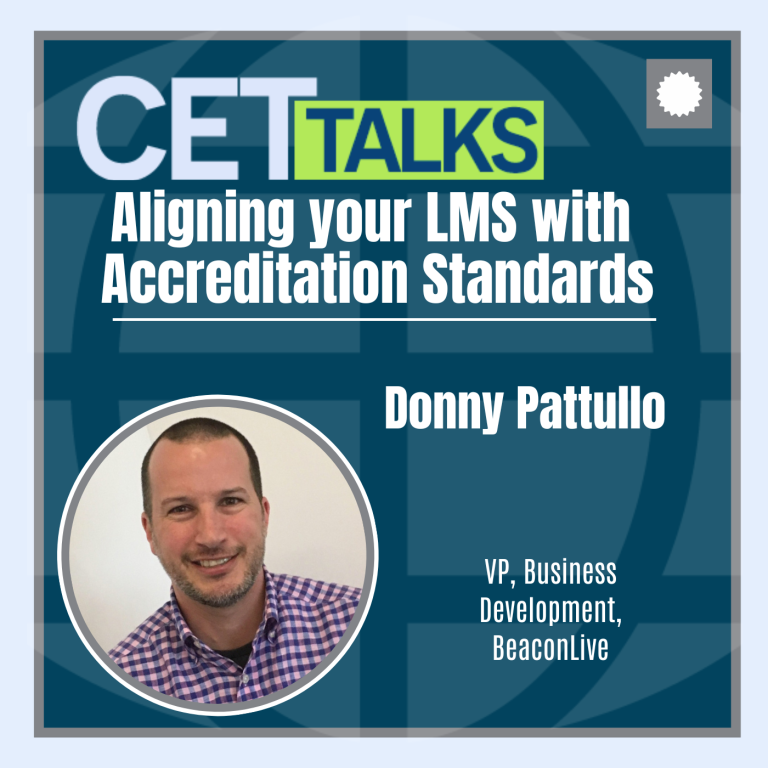Episode 17
.
CET Talks: Accreditation, Learning and Leadership
Episode 17
JUNE 11, 2024 . 25 MINUTES
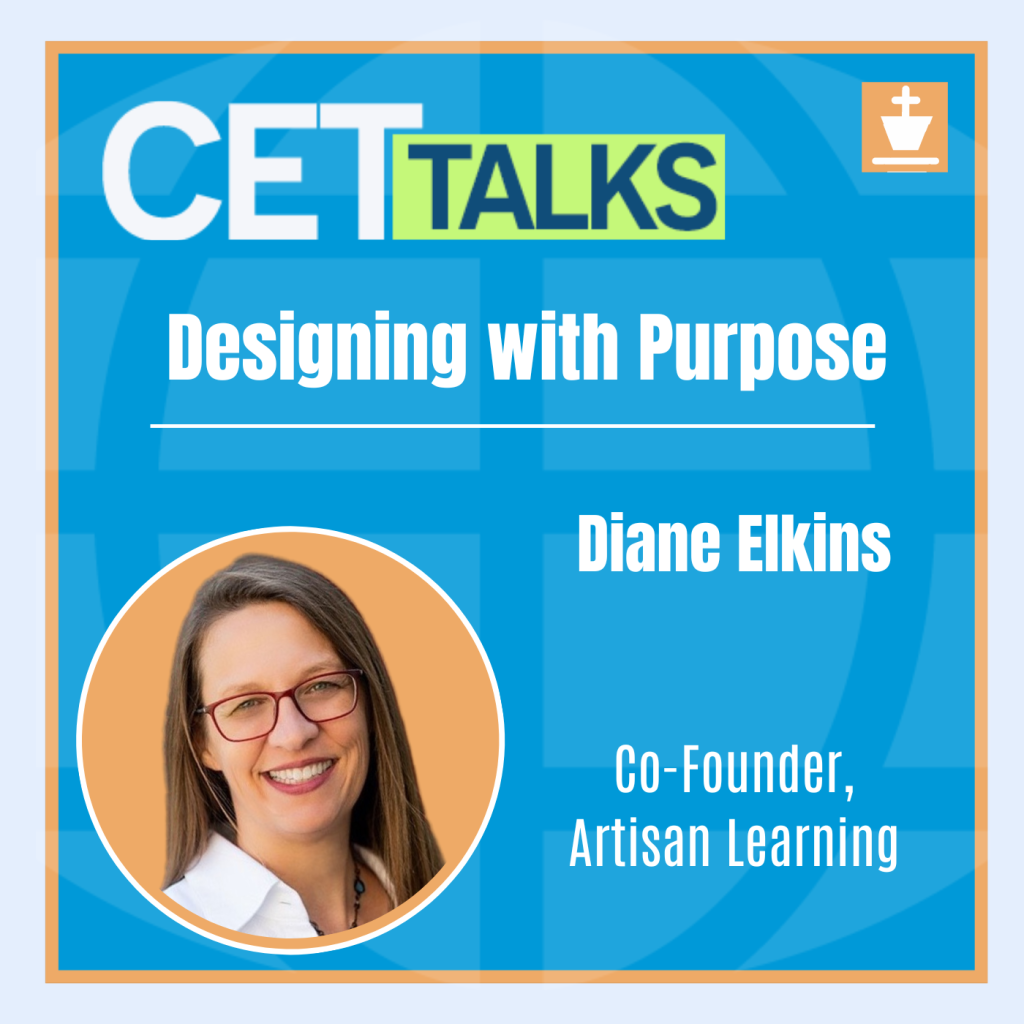
Designing with Purpose: Strategies for Accessible e-Learning Development
Across the world, instructional designers, trainers, and facilitators alike are struggling with the same challenges — creating quality content. But are we creating content that speaks to all of our learners, or just the ones that look most like us? Moreover, how can developers and organizations ensure that their digital content is accessible to every learner, especially those who don’t feel comfortable to ask for accommodations? Join Diane Elkins, co-founder of Artisan E-Learning and a founding board member of Inspire Accessibility, as she unveils essential strategies for creating accessible eLearning content, debunking common myths about accessibility and sharing insights into the future of eLearning development.
Listen to the Podcast
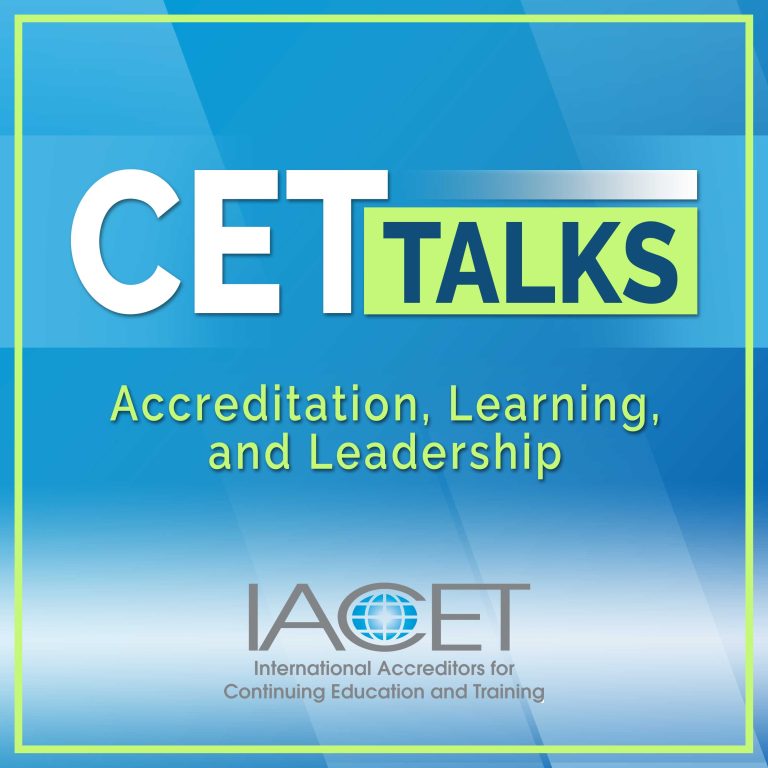
Welcome to CET Talks, the International Accreditors for Continuing Education and Training’s podcast, where we convene thought leaders in the continuing education and training ecosystem to share ideas, research, best practices, and experiences that promote the creation of a world that learns better. Your hosts are Randy Bowman, Interim President and CEO of IACET, and certified corporate wellness specialist Mike Veny.
Across the world, instructional designers, trainers, and facilitators alike are struggling with the same challenges — creating quality content. But are we creating content that speaks to all of our learners, or just the ones that look most like us? Moreover, how can developers and organizations ensure that their digital content is accessible to every learner, especially those who don’t feel comfortable to ask for accommodations? Join Diane Elkins, co-founder of Artisan E-Learning and a founding board member of Inspire Accessibility, as she unveils essential strategies for creating accessible eLearning content, debunking common myths about accessibility and sharing insights into the future of eLearning development.
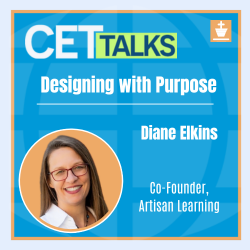
Transcription
Host: Welcome to CET talks, the International Accreditors for Continuing Education and Training’s podcast, where we convene thought leaders in the continue education and training ecosystem to share ideas, research best practices, and experiences that promote the creation of a world that learns better. Enjoy the episode.
Randy Bowman: Hello, and welcome to CET talks. My name is Randy Bowman, and I’m here with my co-host, Mike Veny, a certified corporate wellness specialist and CEO of an IACET-accredited provider. How are you doing today, Mike?
Mike Veny: I’m good. And hello to everyone listening. I’m the CET co-host, Mike Veny, and today we’re going to be talking about “Designing with Purpose: Strategies for Accessible e-Learning Development.” And Randy, I just wanted to let you know that, as our company is creating courses, one of the topics that’s coming up a lot is accessibility. I learned that the hard way because fonts that I was choosing for certain documents and visual elements of our courses weren’t meeting current accessibility standards.
Randy Bowman: Oh, Mike, that happens so often, where we go about our business and forget that not everybody is equipped with the same set of skills and facilities. Next thing you know, we have a learner saying, “Hey, I can’t access this,” or “I can’t read this.” I’m really excited to have Diane with us today, and I love our title “Designing With a Purpose”, because I really, really hope that in our conversation today, we can move beyond compliance. To me, that’s the lowest bar on the ladder. I want us to get to where we as a society, and we as a culture, are having a conversation about accessibility, where we’re not even really thinking about it because it’s so ingrained in our nature to be accessible, that we no longer even have to think about being intentional. But as we get to that point, let’s focus on being intentional about making sure our learning is accessible.
Mike Veny: Absolutely, and that’s all about being a world that learns better. I’m super excited to introduce our guest today, Diane Elkins. She’s the co-founder of Artisan Learning, a custom learning design company specializing in Articulate Storyline, Lectora, and Captivate. She has built an incredible reputation as a national learning expert by being a frequent speaker at major industry events such as ATD, the Learning Guild, Training Magazine, and ASAE. She’s also the co-author of the popular “E-Learning Uncovered” book series, as well as “E-Learning Fundamentals: A Practical Guide”, from ATD Press. Diane, welcome to our show today.
Diane Elkins: Thanks for having me, and thanks for giving this topic a megaphone.
Randy Bowman: Diane, we’re so thrilled you’re here with us today. Like I mentioned, we want to move beyond mere compliance. To kick things off, can you share with our listeners why prioritizing accessibility in the e-learning environment isn’t just a matter of legal compliance, but a crucial aspect of inclusive education and training?
Diane Elkins: That’s a great question, and it gets down to the mission of an organization. Now, I would imagine most people on this podcast are in organizations where all or part of their mission is to help people do their jobs better. So the question is, who’s the who? Do we mean people like us? Because you know what? I’m the easiest person for me to design for, and it’s easy for me to design for my paradigm. I went for the first 15 years of my training and development career without even thinking about accessibility. That’s what you call privilege, because I didn’t have to, because I could use a mouse, I could see, and I operated from my frame of reference; it’s easy for me to design for people like me. It gets to the fundamental question of who gets to get better at their job, who deserves a chance to get better at their jobs? If you were to ask anybody in our field, they would say, “Well, everyone.” It’s like Oprah. You get to get better at your job, and you get to get better at your job, and you get to get better at your job. But what a lot of people operate under is an “if”. You get to get better at your job if you can listen to this video. You get to get better at your job if you can distinguish between these red and green dots. You get to get better at this job, but only if you can use a mouse, because I put in three drag-and-drop activities that you have to complete before you can move forward to the next slide. Everybody means everybody. If everybody deserves a chance to get better at their jobs, then everybody deserves a chance to get better at their jobs. That’s why we’re here.
Mike Veny: I love that. One of the challenges with this topic is that there’s someone listening right now who’s maybe just listening because, “You know what? I want to be compliant with accessibility.” So, I’m glad we’re going deeper here into the “why”. What’s one common misconception of the many misconceptions about e-learning accessibility that you’d like to debunk or clarify for us today?
Diane Elkins: Mike, I thought we were friends. Why are you making me pick just one? Okay, so I would say that one of the most…can I pick two? I’m going to pick two. So the first one is, nobody who does this job, whatever the job is, would have a disability. You couldn’t do this job if you had a certain disability. Well, says who? Is it my job to decide what somebody can or can’t accomplish in their life? Again, I am relying solely on my paradigm about what’s possible. I don’t know what people can and can’t do with the right training, gumption, lived experience that I don’t have, or vocational rehabilitation. And yes, a little bit of accommodation. What’s going to make it harder for them to not be able to do this job is me creating training they can’t take. We don’t want to be in a situation where people can do the work, but they can’t do the job because we don’t have the systems and processes that support them. That goes all the way back to how we announce our jobs. How do we screen and hire for our jobs? How do we train people? How do they request time off? You know, if we don’t have anybody in our organization doing this job with a disability, we need to ask ourselves, “Why not? What obstacles have we put in their way?” It’s the barriers that are the problem, not the disability. Okay, so there’s number one. Number two is that making e-learning courses is hard and then the courses are boring. Well, if you make all of your courses that are accessible boring, that’s on you. There’s nothing accessible or inaccessible about a great story, about a great scenario. And if drag-and-drop questions are the hill you’re going to die on, well, I think you need to rethink your skill level. Think about all the things in the world you have ever learned in your entire life. Go ahead. I’ll give you a second. Of everything you’ve ever learned, how many of them did you learn without dragging and dropping anything? I bet most of them. If your course is boring, we can’t blame accessibility for that. And is it hard? It can be, but we can do hard things. Again, I’ll tell you what’s really hard—navigating a system that pretends you don’t exist. That’s what’s hard.
Randy Bowman: Wow. There’s just so many great nuggets in what you’re saying, Diane. I just love all of it. So, from your vantage point at the intersection of e-learning design and accessibility advocacy, what are the future trends that you foresee in how e-learning platforms and content are going to evolve to meet e-learning accessibility needs?
Diane Elkins: What’s interesting is I’ve seen more changes in the last two years than I’ve seen in the previous ten, and that’s because more people care. More people are aware. I think a lot of it ties back to the DEI reckoning that this country and many countries had a couple of years ago that was long overdue. Accessibility is riding that wave. More people are asking for it; therefore, more vendors are putting it in. Let’s be realistic, software vendors are driven by what their customers ask for and will pay for. If they weren’t asking, well, why would I prioritize that tool? Some organizations did some software platforms and put it in anyway, but some are now doing it because people are asking and because more people care inherently, as well. Both groups of people are increasing right now. You’re seeing more self-check tools, more built-in tools. In PowerPoint, if I’m giving a live presentation at a conference, I can click one button on the slide show menu and get automated closed captioning projected with my slides. It’s a check mark. Now are automated captions perfect? No. Progress over perfection! It is better than doing nothing. Even compliance. Compliance is the lowest bar, but it’s better than doing nothing. It’s better than being under the bar. Microsoft Word, now, when you go to use the highlighting feature, has a checkbox where it only shows you the high contrast options. They’re going in everywhere, but they’re not always going in with fanfare, so you might not notice them. You have to be aware. At the bit of sounding a cliche, the other technology trend is AI. AI is a huge, huge boon for accessibility. For example, I’m a volunteer for an app called Be My Eyes. Somebody just called me this weekend. They call, they point their camera at something, and I’m their eyes. I tell them which one is their red shirt, or which one is the can of corn, or whatever it was. Now they are a huge company that’s doing R & D in the area of AI for accessibility because there’s no reason AI can’t tell them whether that’s a can of corn or a can of beans. There isn’t. There’s no reason that AI can’t tell them which one’s the purple shirt and which one’s the blue shirt. Massive, massive AI. In terms of all the automated captioning, it’s still not great. We need to be really careful about, I just said, progress over perfection, but we need to be really careful about automated closed captions in the learning environment. Imagine if you’ve got storyboards and you have SMEs looking at it, maybe it’s going to be legal information. Which of those groups is going to look at your written script and say, “Yeah, I’m good with 90% accurate.” So, is it really okay if your closed captions are 90% accurate? What if it drops the word “not” and it completely flips the meaning of a sentence? That’s one word that it got wrong, but it’s a really important one. I digress. There are massive improvements. I don’t trust AI fully for captions, but if it gets me 90% there, great. I also don’t trust AI yet for coming up with alt text descriptions for images for the people who can’t see, because they don’t know what’s important about it to the learning. But hey, if it gets me started, great. So there’s massive, massive, massive changes coming with AI, specifically around accessibility.
Mike Veny: You pretty much answered this question, but the way I interpret that is it’s going to be a more personalized experience for the learner in the future with all this technology. Would you say that’s accurate?
Diane Elkins: I think that’s definitely possible. A lot of it is the way personalization helps with accessibility. Because, you know, personalization helps with learning. But how does personalization help with accessibility? One of the core tenets of accessibility is choice. I have a friend who has trouble processing audio information by the end of the day. She’d rather read the transcript at the end of the day. Somebody else would rather hear it. Somebody might want bright colors; somebody might want low colors. And the more AI can automate these changes, the more a learning developer can make that happen. Right now, I don’t have the time to make 12 different formats of everything. But if we can provide choices for how people consume content and AI can make that easier for us to do, that’s going to help people consume content the way it’s easiest for them to consume it.
Mike Veny: Thank you. How can data, analytics, and learner surveying play a part in enhancing e-learning accessibility? Are there specific metrics or feedback loops that instructional designers can use to help identify and address accessibility issues more effectively?
Diane Elkins: When looking at data and analytics, I would go more qualitative than quantitative. Perhaps you’ve heard the term “nothing about us without us”. Focus groups, employee resource groups, testing conducted by people who use the technology that we’re trying to work with, and the people who would personally be impacted by our choices—let’s get them involved. One of the best things I did was when I was new to accessibility—I was reading all the standards and learning about section 508 and studying the Lectora User Guide back at the time. But one of the best things I ever did was sit down, side-by-side, with a blind woman who uses a screen reader. I watched her take my course, and she talked about what worked and what didn’t for her. You get insights you’d never get on your own. Recently, I was able to observe some government accessibility testing. We had a “click to reveal” activity, click a button and a pop-up appears. There’s a little “close” button on the pop-up and it’s labeled, “Close”. And he goes, “What am I closing, the course? The browser?” That’s a paradigm I didn’t have. To me, it was so obvious what it was closing and that “Close” was enough. I didn’t have the perspective that he had. My choices are going to impact him. So, the more you can talk to the people who will be impacted by your choices, the better. I would be very careful about quantitative data, and here’s why. There was a report put out last year by the Boston Consulting Group. It was reported in Forbes Magazine, and they surveyed 28,000 employees in 16 countries. They asked the employees whether they had a disability or health condition that limits a major life activity. Now, these are employees. This is not my 81-year-old mother. These are people in the workforce. About 25% of the employees said they did have a disability or health condition that limits the major life activity, 25%. Now they ask the people’s employers, “Do you have employees that have these things?” Most organizations report that their workforce includes relatively few employees with disabilities, just 4% to 7% on average. So, can you rely on a survey of whether people in your audience have a disability? Yeah, you can rely on it being wrong. That’s what you can rely on. And, gee, can you think of any reason why a person might not want to disclose a disability to their employer?
Randy Bowman: I had a follow up question to this. How do we, as employers, create environments where people feel free to do that? My son has dyslexia, had to take an assessment with his job, and he kept failing it because he would not ask for accommodations, for someone to sit with and just read the test to him. He knew all the answers; he was well equipped to do the job. He just did not get through the assessment, and he felt some embarrassment and shame. How do we create environments where we remove that? So people do feel free to say, “Hey, I need some help.”
Diane Elkins: Yeah. Well, that’s the topic of a different podcast, but…
Randy Bowman: But, in a short answer.
Diane Elkins: There are a couple of things we can do, though. One is, let’s bake some of the accessibility in without asking people to request an accommodation. For example, time limits are a big factor for many people with disabilities, whether it’s dyslexia or eye-hand coordination. I mean, the list is huge. Most situations in learning and development, where an assessment has a time limit, that time limit is not necessary. I mean, if I’m doing a quiz on air traffic control terminology, I don’t want someone to be in the control tower going, “Oh, two planes are about to crash each other. Oh, I know this one. Just gimme a minute. I got it. I remember this one from training.” No, I’m going to make that a timed quiz. And then let’s not make it too hard to ask for an accommodation, for one thing. Make it automatic. Remove the barrier. Or if somebody asks, don’t ask questions. Don’t ask a blind woman to go to the doctor to get a note that says she’s blind when she’s been blind for 25 years, and now she has to take time off with work because your letter needs to be dated within the last six months. Really? I think that’s a lot of it. Let’s just not put the barrier there in the first place, so people don’t have to ask. And then if they do ask, let’s maybe not ask a whole lot of questions about it. People shouldn’t have to pick between their professional development and their privacy. That shouldn’t be a choice they have to make.
Mike Veny: I heard that you were part of the Lake Park High Steppers as a majorette. Is that true?
Diane Elkins: It is very true. Yes. That was my love in elementary school. In fact, I still have my baton. I still have it.
Mike Veny: You do? How did that experience affect your work today? I am just curious,
Diane Elkins: How did it experience my work today? Well, I was always really sad that we never got to wear the white boots. We only got to wear the little white Keds. So I still have some disappointment in my life over that, but I try to overcome. You know what? Part of why I still have it is the body mechanics of what we do. I sit at my computer all day and twice I have gotten frozen shoulder from—I call it Storyline shoulder—from getting sucked into a project. I get into the flow, I realize three hours have passed and I haven’t moved, and I hurt my body. I’ve been on book writing retreats where in two weeks I get a whole book done, and I don’t get up and move my body. I still use my baton to give my fingers and my hands a stretch, get my body a stretch because sitting at your computer all day is not good for anybody.
Randy Bowman: Isn’t that the truth? So, Diane, thank you so much for being here. One of our favorite questions to ask, and it’s the last question we ask every single one of our guests, is, what does a world that learns better look like to you?
Diane Elkins: A world that learns better to me is everyone. Everyone gets to learn better because everybody wins. There is no downside to someone being good at their job. Zero, zilch. When people are good at their jobs, everyone wins. They’re happier, have better job security, income satisfaction, fulfillment. Their coworkers are happier, their customers are happier, their boss is happy. Their stakeholders, their shareholders are happier, their dog is happier if they’re happier. Everybody wins when people can do their job better and everyone means everyone.
Mike Veny: Diane, thank you so much for this interview today. Thank you for making this world a better place through this focus on human-centered learning, which is not just for the learning industry, it’s for us as humans, right? Just make everything human-centered. It’s about all of us. I wanted to tell you, Randy, I got something very important out of this interview. The word “choice”, actually, and it’s your choices in designing, learning, and empowering learners to have a choice. What about you, Randy?
Randy Bowman: Oh, there were so many good takeaways today. I have six things written down, but I only get to pick one takeaway. I’m going to go with the one that is probably closely related to that, and it was one of the first ones. That’s “who’s your who?”. I love the idea that, from the very beginning, define who’s your who, because once you know that, the rest falls into place. Diane, once again, thank you for being with us today and delivering such an engaging and informative presentation. Obviously, there’s so much more in this space, in this field, that can be covered, and I know people can find that in your books and in your talks; more information about being intentional with accessibility. As we wrap up, we’d love to hear from you, our listeners, what is one thing you can implement in your organization or on your team to make your learning experiences more accessible to your attendees? Please share your experiences and insights on our LinkedIn page. Your stories can provide invaluable lessons and inspiration to others who are navigating these same paths. So don’t forget, you can submit your topics, ideas, suggestions for guests and other feedback on the CET Talks podcast page of the IACET.org website. We certainly hope you’ll subscribe to this podcast on your favorite podcast platform, so you don’t miss any great e-episodes or any great experts like the one we had today. Thank you so much for joining us. Have a great day.
Host: You’ve been listening to CET talks, the official podcast of IACET. Don’t forget to subscribe to the podcast on Spotify, Apple podcasts, or wherever you listen to podcast. To learn more about IACET visit IACET.org, that’s I-A-C-E-T .org. Thanks for listening and we’ll be back soon with the new episode.
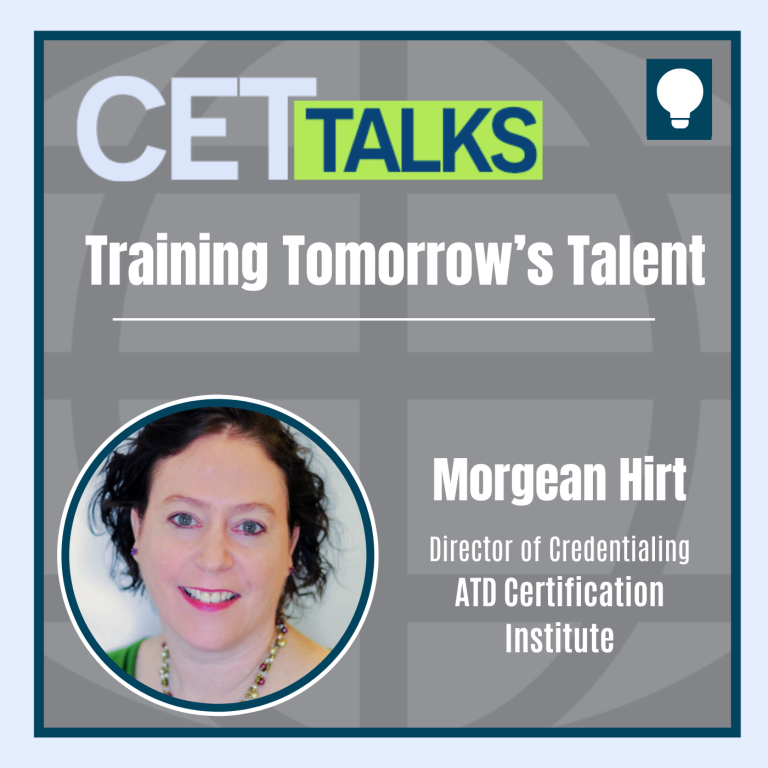
Episode 31: Training Tomorrow’s Talent: Exploring Certification, Standards, and Impact with ATD’s Certification Institute
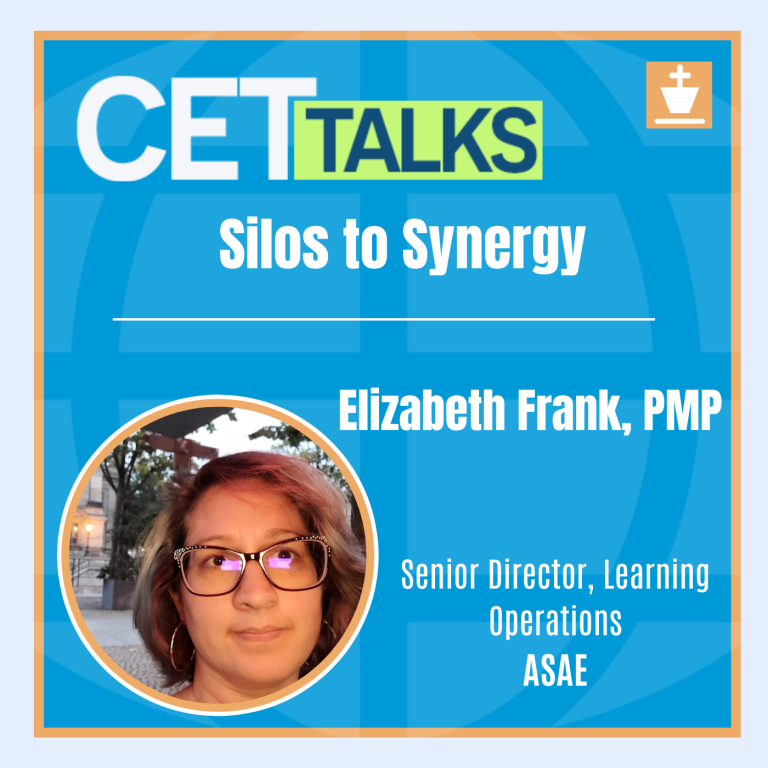
Episode 30: Silos to Synergy: Holistic Approaches to Creating Collaborative Learning

Episode 29: Credentials in Crisis: Challenges and Opportunities in Modern Education Recognition
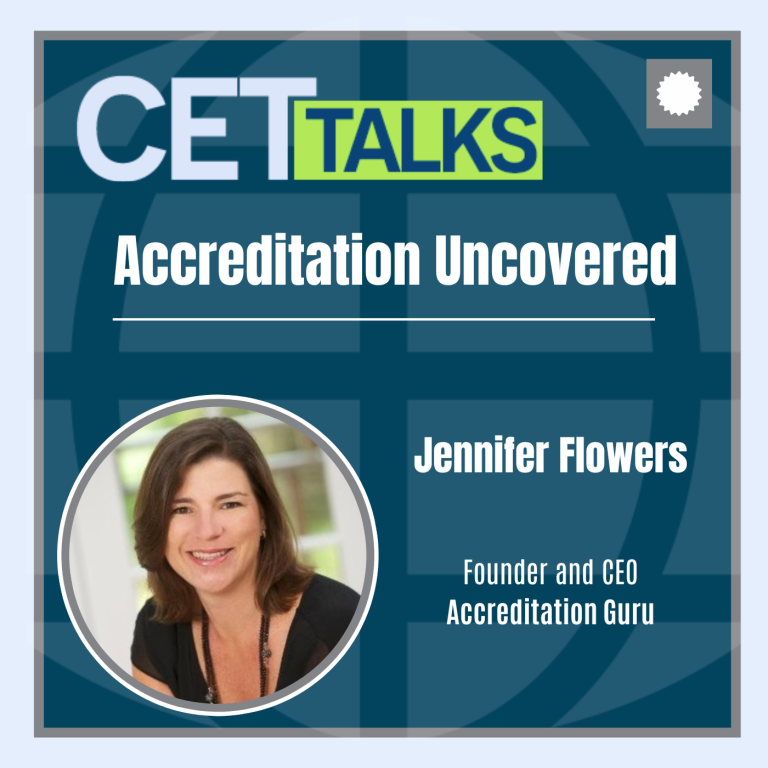
Episode 28: Accreditation Uncovered: Essential Insights from an Industry Leader

Episode 27: Two Truths with a Lie: Managing the Myths of Modern-Day Learning
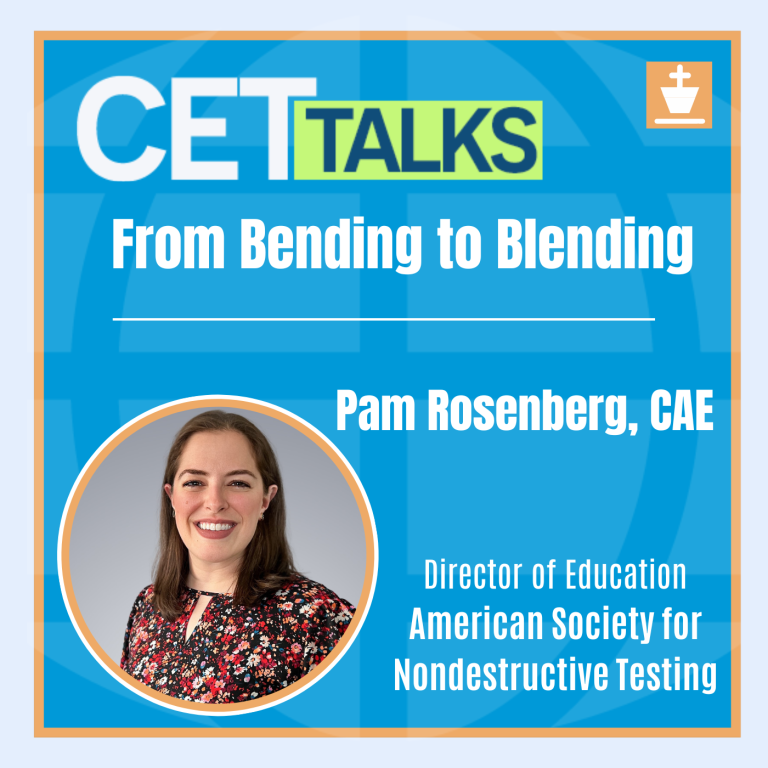
Episode 26: From Bending to Blending: Best Practices in Integrating Externally-Created Content
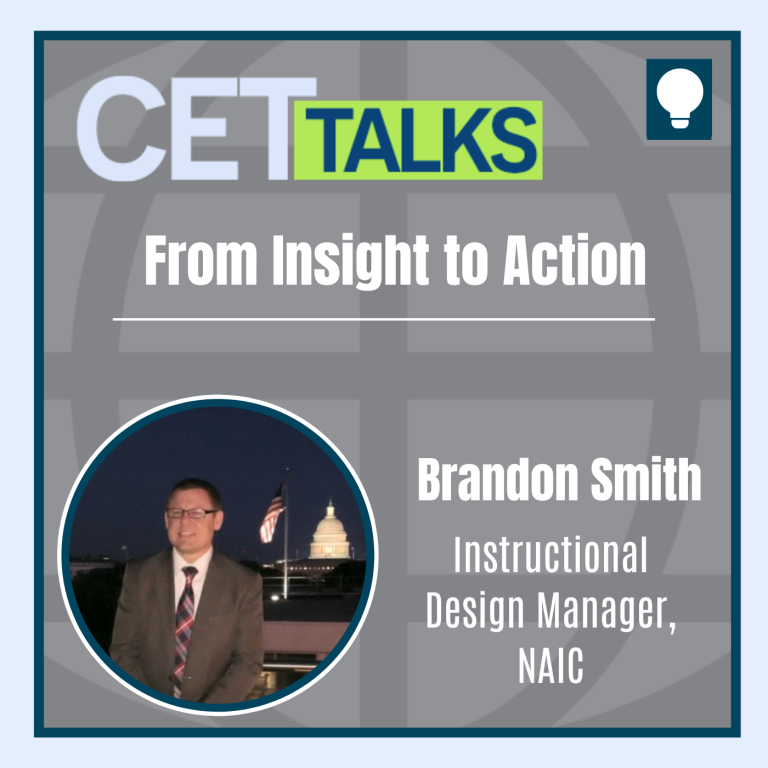
Episode 25: From Insight to Action: Charting the Career Path of a SME-turned-ISD
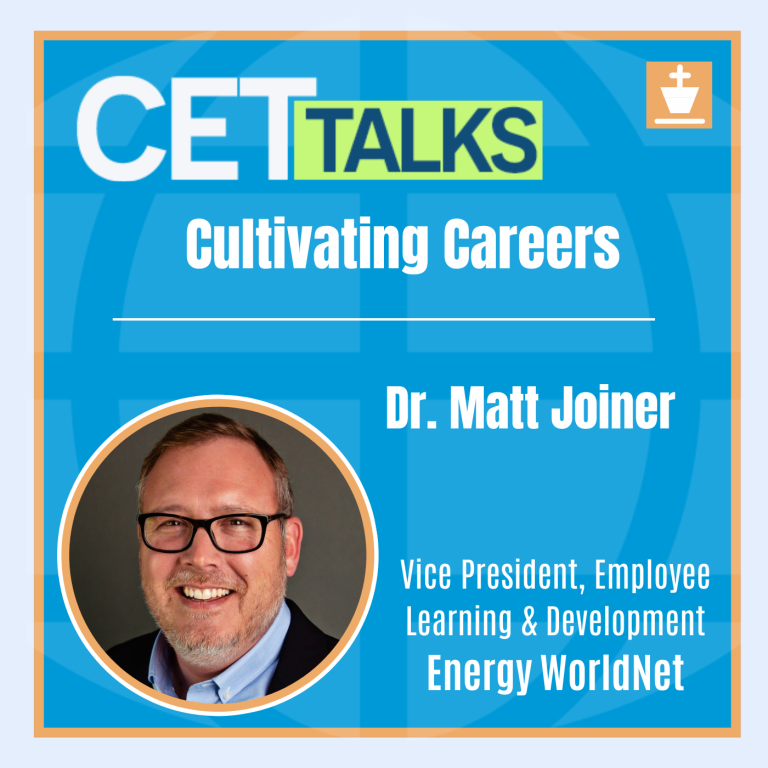
Episode 24: Cultivating Careers: The Power of Employee Engagement for Organizational Success
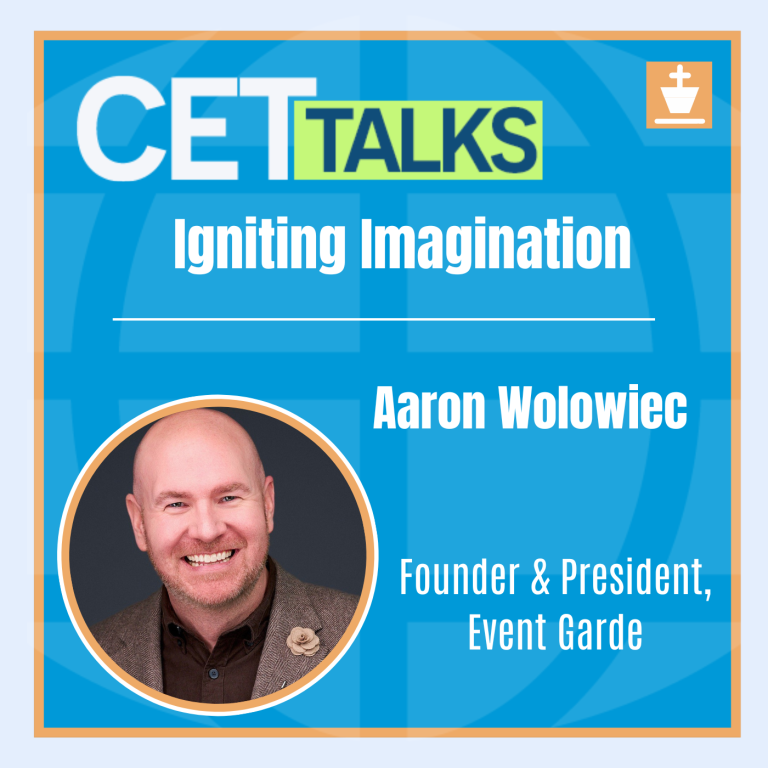
Episode 23: Igniting Imagination: Crafting Creativity in Training Environments
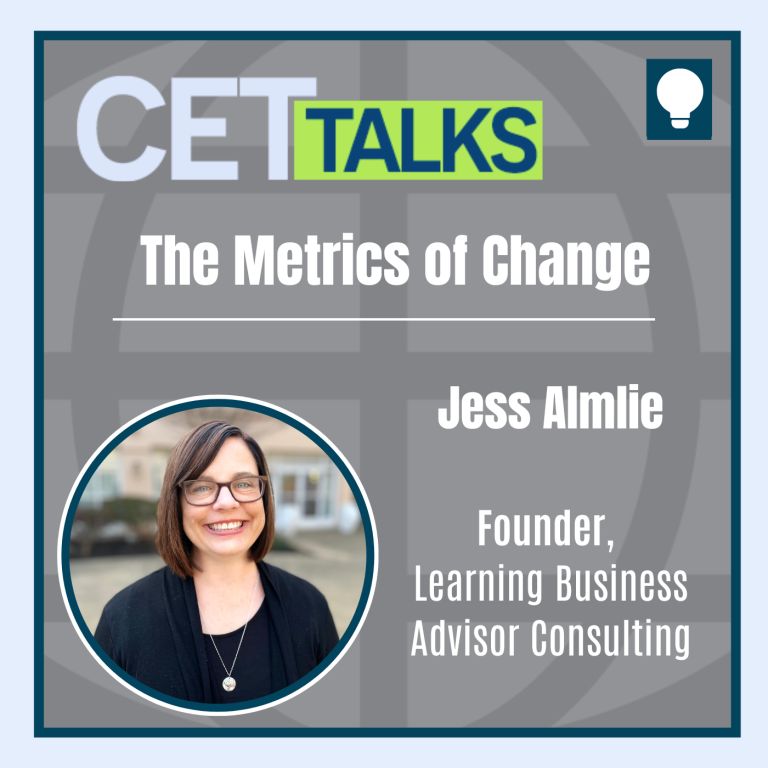
Episode 22: The Metrics of Change: Navigating Purposeful Measurement in L&D
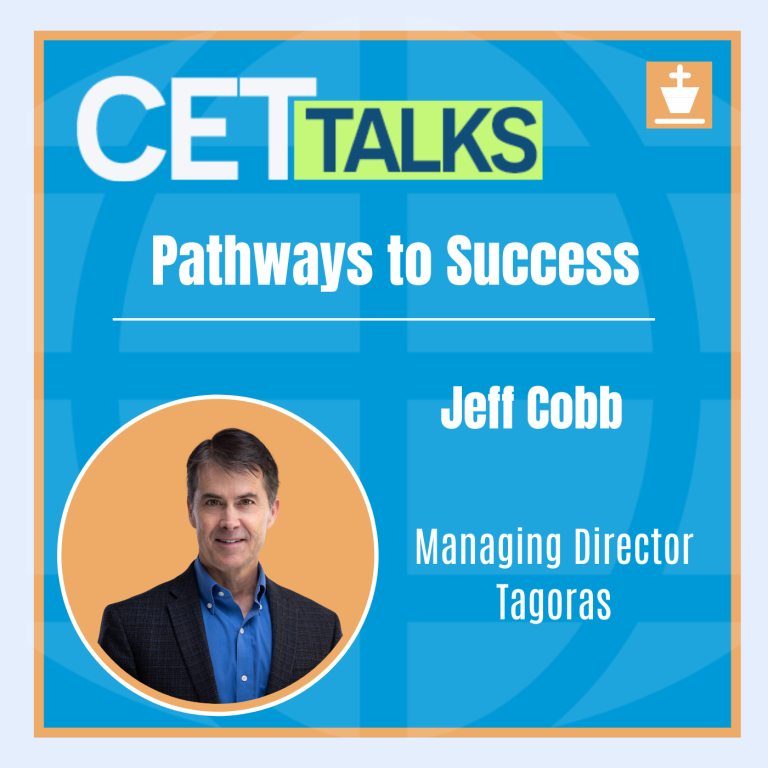
Episode 21: Pathways to Success: The Value of Lifelong Learning through Digital Credentials
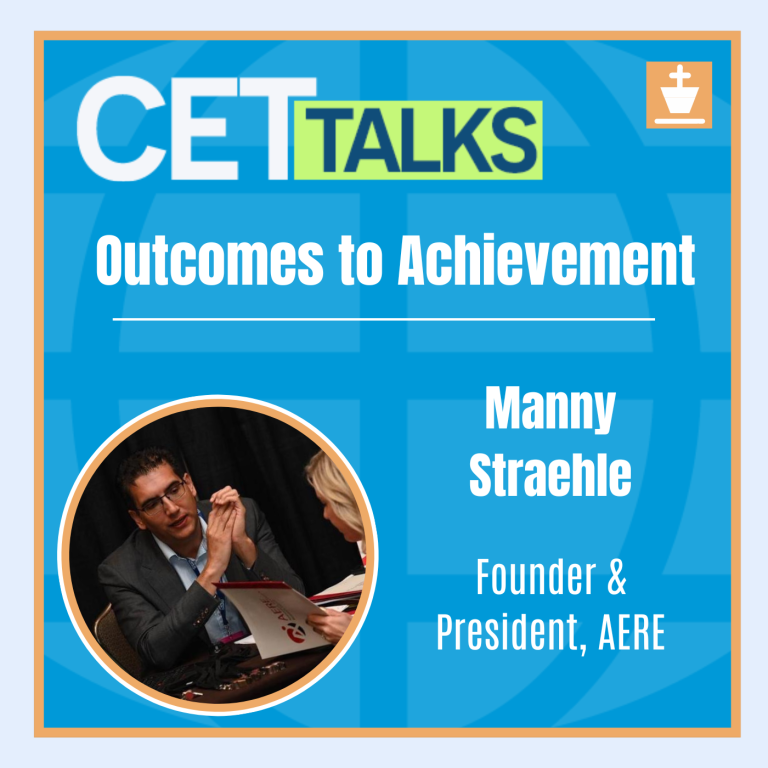
Episode 20: Outcomes to Achievement: Crafting Tomorrow’s Workforce Through Competency Models

Episode 19: Chatting with the Future: Enhancing AI Output Through Prompt Engineering

Episode 18: On the Inclusive Frontier: Harnessing Neurodivergence in Modern Training

Episode 17: Designing with Purpose: Strategies for Accessible e-Learning Development
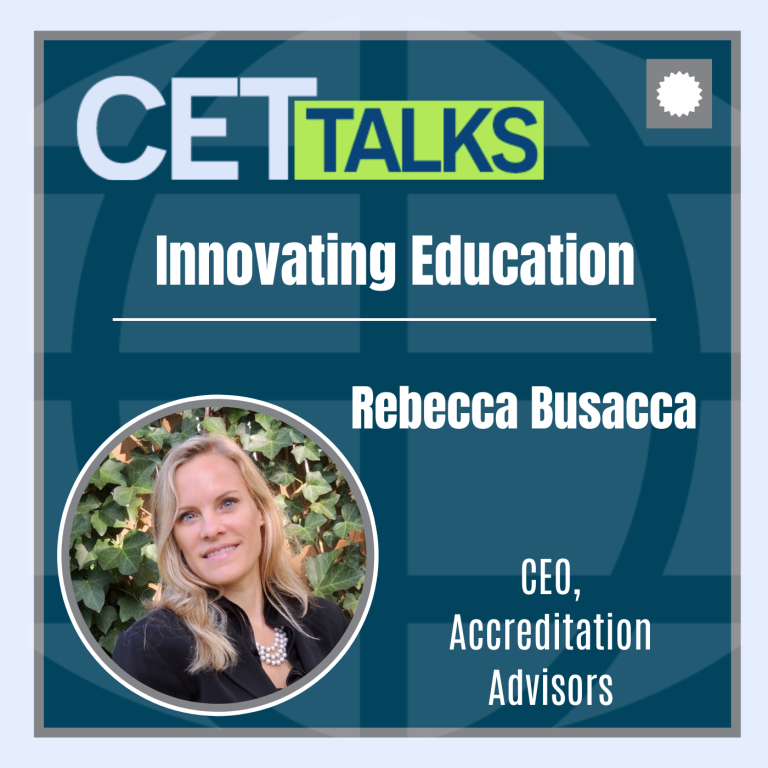
Episode 16: Innovating Education: Navigating Accreditation for Short-Term Training
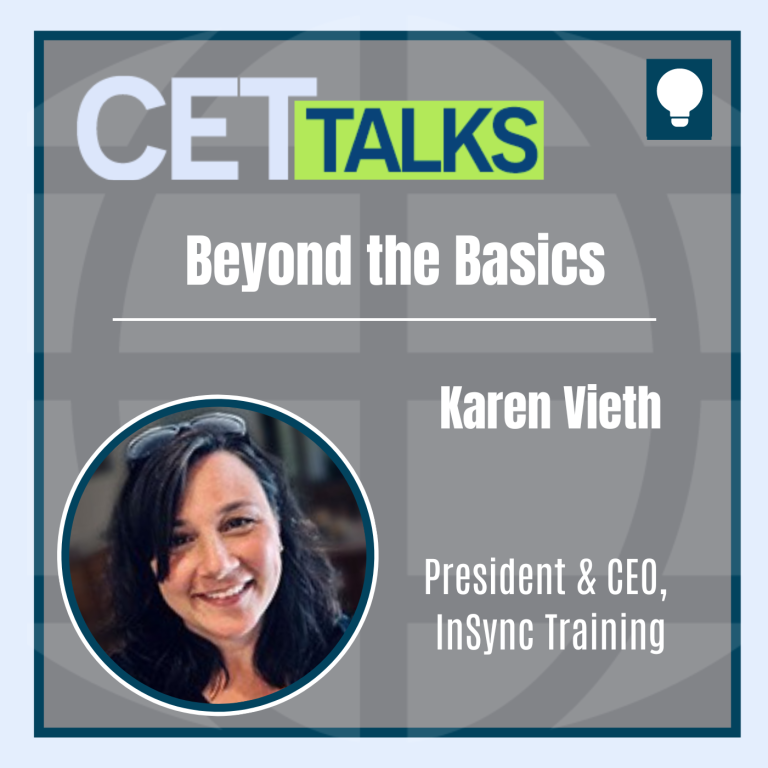
Episode 15: Beyond the Basics: Elevating Virtual Training through Expert Facilitation
